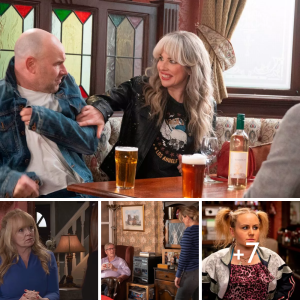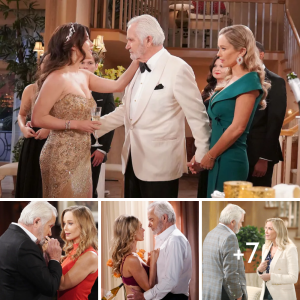Coronation Street has been a staple of British television for over six decades, capturing the attention and hearts of audiences with its compelling storylines, complex characters, and unpredictable twists. Set in the fictional town of Weatherfield, the soap opera delves into the lives of its residents, bringing to light their joys, sorrows, and everything in between. From long-running families to short-lived but unforgettable characters, Coronation Street has a unique ability to keep viewers hooked, season after season.
One of the most captivating aspects of Coronation Street is its portrayal of real-life issues through its characters. The show has consistently tackled sensitive topics such as mental health, domestic abuse, racism, and LGBTQ+ rights, making it relatable to audiences across different walks of life. Whether it’s David Platt’s ongoing struggles with trauma following a violent attack or the challenges faced by transgender character Nina Lucas, the series doesn’t shy away from addressing important societal issues. These storylines are executed with empathy and care, allowing viewers to connect with the characters on a deep emotional level.
The strength of Coronation Street lies in its diverse and multi-dimensional characters. The Barlow family, led by Ken Barlow, is one of the show’s longest-standing families, with members spanning multiple generations. Ken’s relationship with his children, including the ever-complex relationship with his son Peter, has been a cornerstone of the show’s narrative for decades. This family’s drama highlights themes of love, loyalty, and personal growth, as each character faces their own set of challenges. Similarly, the Windass family, with its often chaotic dynamics, has provided viewers with countless memorable moments. From the fiery relationship between Fiz Stape and Tyrone Dobbs to the antics of the younger Windass generation, the family has been integral to the drama that unfolds in Weatherfield.
Over the years, Coronation Street has produced some of the most unforgettable characters in television history. The larger-than-life figures such as the legendary Deirdre Barlow, who was the heart and soul of the show for many years, and the villainous yet charismatic Richard Hillman, whose actions sent shockwaves through the entire town, are etched in the minds of fans. Characters like these bring depth and excitement to the show, allowing Coronation Street to continually evolve while maintaining its strong connection with its audience.
Romantic relationships also play a key role in the storytelling of Coronation Street. The relationships between characters often evolve over time, with love, betrayal, and heartbreak making for compelling viewing. Whether it’s the enduring love between Steve McDonald and Tracy Barlow, the on-again, off-again romance between Sally Webster and Tim Metcalfe, or the intense passion of the younger couples, the show never fails to deliver emotional rollercoasters. These relationships form the backbone of many plotlines, highlighting the complexities of love and commitment.
Another element that sets Coronation Street apart from other soap operas is its ability to provide a sense of community. The residents of Weatherfield, though often embroiled in drama, share a strong bond with one another. From the corner shop to the Rovers Return Inn, local gathering spots become the backdrop for both everyday conversations and explosive confrontations. The interconnectedness of the characters, combined with their support systems, is what makes Coronation Street feel like a real neighborhood where people experience both the highs and lows of life.
In conclusion, Coronation Street continues to be a powerful force in British television, delivering compelling stories that tackle social issues, celebrate relationships, and explore the intricacies of human emotions. Through its iconic characters and dramatic twists, the show has built a loyal fanbase that spans generations. As the streets of Weatherfield continue to be filled with drama, heartbreak, and joy, Coronation Street remains a cherished part of the British cultural landscape.





